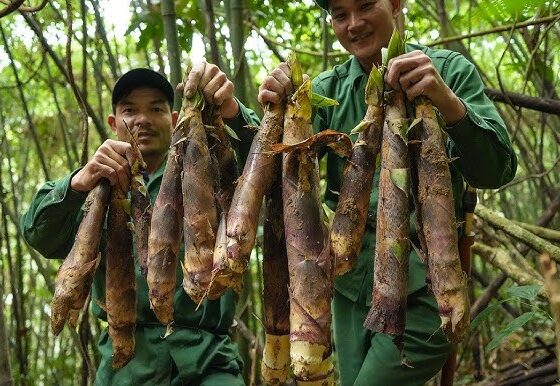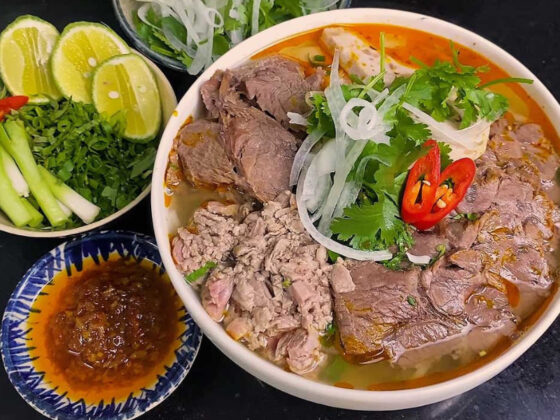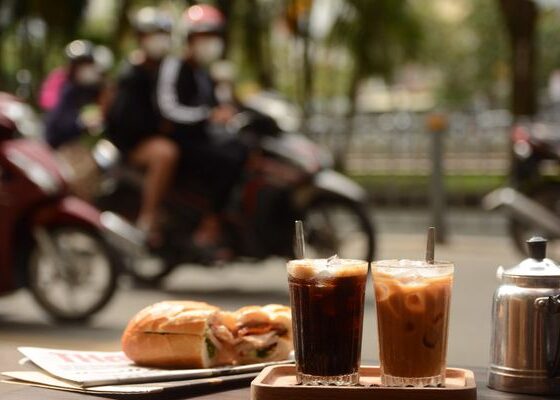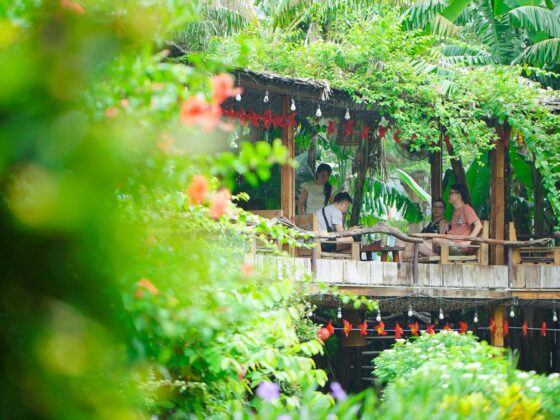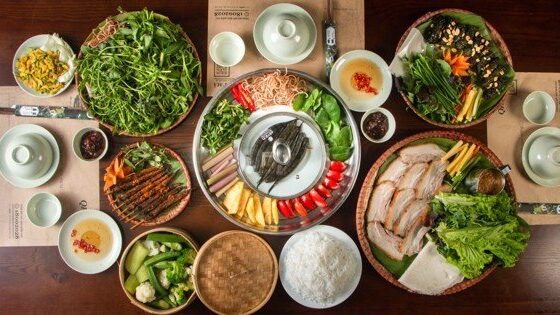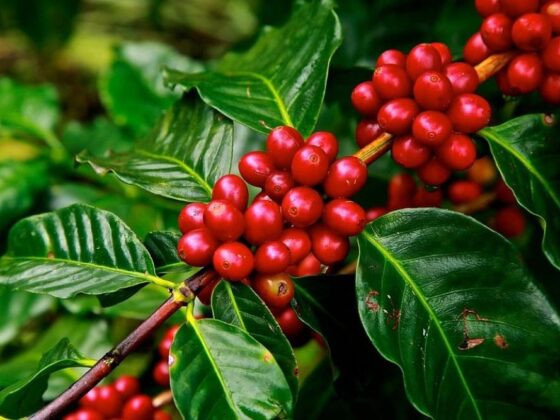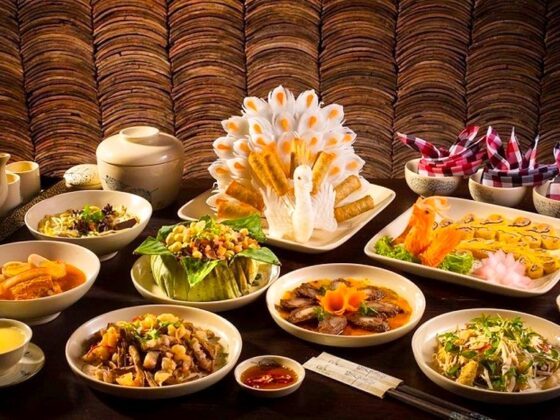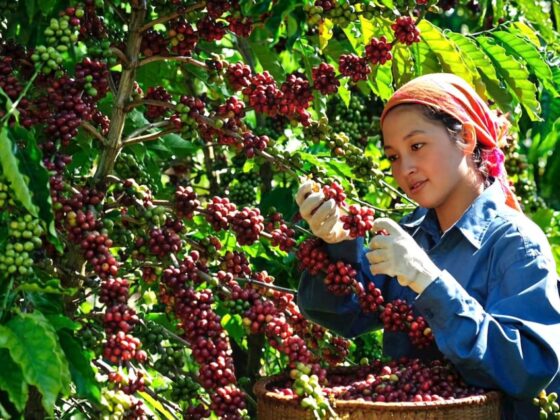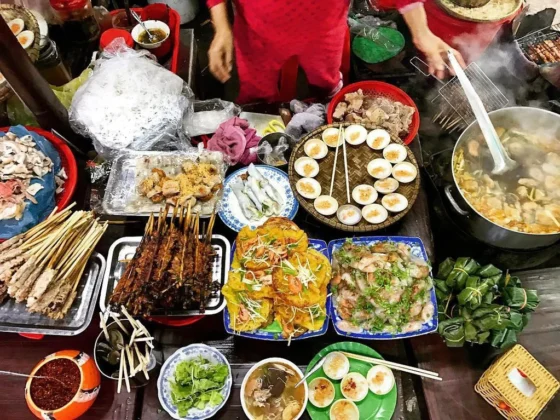Table of Contents Show
✍️ AI is summarizing:
Vietnamese New Year food is a vibrant tapestry of sounds, stories, and flavors that reflects the country’s rich cultural heritage. Central to this celebration are Bánh Chưng and Bánh Tét, beloved rice cakes that hold a special place in the heart of Vietnam’s Tết (Lunar New Year) celebrations.
This quintessential Vietnamese New Year food is not just a tasty treat; it is rich in symbolism and history, representing the harmony of nature with Bánh Chưng’s square shape symbolizing the earth, while Bánh Tét’s cylindrical form represents the sky.
Read more interesting posts here:
- Banh Tet: The Iconic Vietnamese Sticky Rice Cake of Tet
- Banh Day: The Traditional Vietnamese Rice Cake of Unity and Celebration
- Banh Chung: The Symbolic Vietnamese Rice Cake of Tết
The heart of Vietnamese New Year food: a family tradition
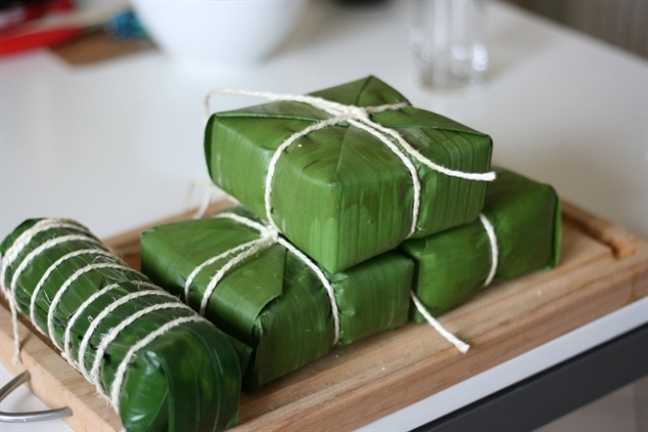
The preparation of this essential Vietnamese New Year food is a cherished family ritual, bringing loved ones together in a warm and festive atmosphere. Made from glutinous rice, mung beans, and succulent pork, these ingredients are wrapped in banana leaves and boiled for hours, creating a delightful blend of flavours and aromas.
As families gather to make these cakes, they share stories, laughter, and memories, reinforcing the bonds that tie them together. This process is a beautiful way to honour ancestors, ensuring that traditions are passed down through generations.
The act of crafting these cakes is steeped in love and care. Each family has its own unique recipe and method, adding personal touches that reflect their heritage. The scent of this special Vietnamese New Year food cooking fills the home, evoking feelings of nostalgia and comfort, and signaling the arrival of the New Year.
Honoring ancestors with Vietnamese New Year food

During Tết, this important Vietnamese New Year food is lovingly offered to ancestors on altars, symbolizing respect and gratitude. This practice is a vital part of the celebration, as families pay homage to those who came before them, seeking blessings for the year ahead. The sight of beautifully arranged rice cakes on the altar is a testament to love and remembrance, fostering a sense of connection to family history.
These cakes are also central to family gatherings, where they are shared and enjoyed, making them a centerpiece of the Vietnamese New Year food table. The distinctive flavours and textures of Bánh Chưng and Bánh Tét create a delightful culinary experience that evokes memories of home and heritage.
A year-round delight
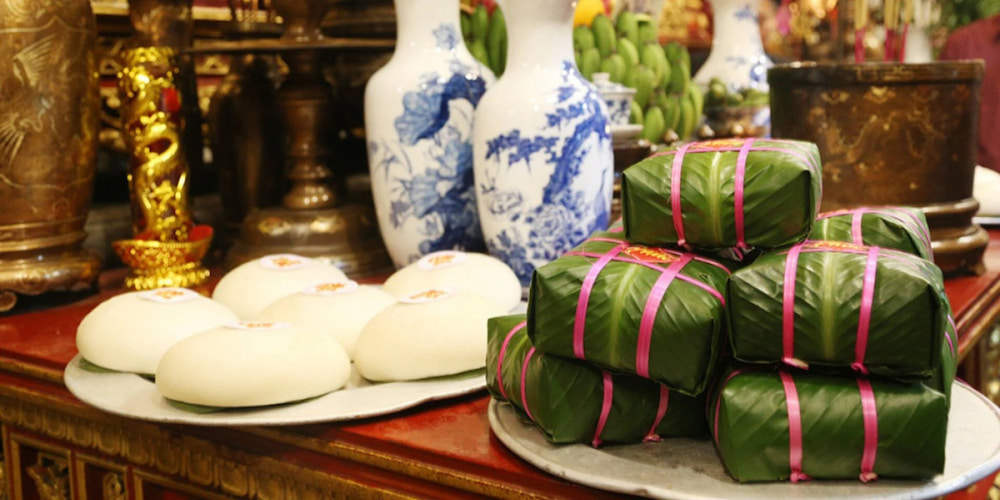
While Bánh Chưng and Bánh Tét are especially significant during Tết, their popularity has transcended the holiday, making them a cherished treat enjoyed year-round. Street vendors and restaurants across Vietnam offer these rice cakes, showcasing the nation’s rich culinary heritage. From festive occasions to casual gatherings, these delicacies continue to bring joy to people’s lives, reflecting the warmth and connectivity of Vietnamese culture.
In contemporary Vietnam, the significance of bánh remains unmatched. They are a beloved symbol of the New Year, embodying the spirit of togetherness, gratitude, and hope for the future. The vibrant colours of the banana leaves and the delicious fillings reflect the diversity and richness of Vietnamese cuisine.
More than cake: Other essential Vietnamese New Year Food
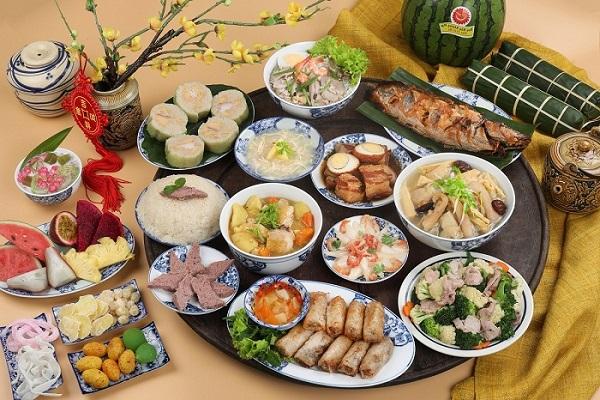
While Bánh Chưng is the star, the Tết table is laden with other delicious and symbolic dishes. No spread of Vietnamese New Year food is complete without these essentials:
- Gà Luộc (Boiled Chicken): A whole boiled chicken, presented beautifully, is a key offering on the ancestral altar. Its golden skin represents a prosperous and fortunate start to the new year.
- Xôi Gấc (Red Sticky Rice): This vibrant dish gets its natural red color from the gấc fruit. In Vietnamese culture, red is the color of luck and happiness, making this an indispensable dish for a fortunate new year.
- Nem Rán / Chả Giò (Fried Spring Rolls): These crispy, golden rolls are a festive favorite, loved by all ages. They are a staple at nearly every celebratory meal in Vietnam.
- Mứt Tết (Candied Fruits): A colorful tray of mứt is offered to all guests who visit during Tết. These sweet treats, made from things like coconut, ginger, and lotus seeds, represent the sweetness of life for the coming year.
The Mâm Ngũ Quả: A tray of blessings
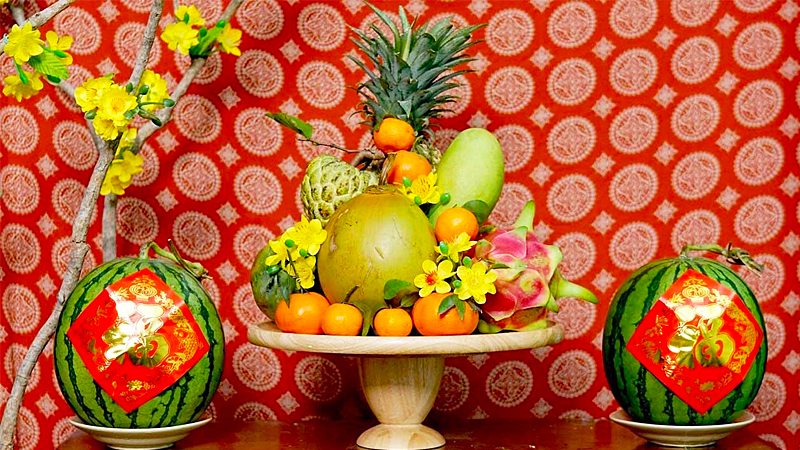
A central part of the Vietnamese New Year food tradition is the Mâm Ngũ Quả, or the five-fruit tray. This is not a dish to be eaten but an important offering for the ancestral altar. The five different fruits represent the five elements of Eastern philosophy and symbolize the family’s wishes for prosperity, wealth, and longevity in the new year. Common fruits include pomelos, bananas, Buddha’s hand fruit, mangoes, and papayas.
Conclusion
Bánh Chưng and Bánh Tét are more than just rice cakes; they are a heartfelt expression of Vietnamese culture and a cornerstone of Vietnamese New Year food. As families come together to prepare and share these delightful treats alongside other traditional dishes, they celebrate their heritage and reinforce the bonds that unite them. Each dish on the Tết table tells a story, weaving together the past, present, and future in a delicious and meaningful celebration.
Ready to explore more of Vietnam’s rich culture? Join our community of explorers in the ExoTrails Facebook Group and follow the ExoTrails Fanpage for daily inspiration and trail tips!
FAQs
What is Banh Chung and Banh Tet?
Banh Chung (square) and Banh Tet (cylindrical) are traditional Vietnamese sticky rice cakes made with glutinous rice, mung beans, and pork, wrapped in banana leaves and boiled for hours.
What food is eaten during Vietnamese New Year (Tết)?
Key foods include Bánh Chưng/Bánh Tét, pickled onions (hành muối), boiled chicken (gà luộc), Vietnamese sausage (giò lụa), and various candied fruits (mứt).
Why is Banh Chung a symbol of Tết?
Banh Chung is a symbol of Tết because it represents the earth in ancient Vietnamese cosmology and making it is a cherished family tradition that honors ancestors and brings loved ones together.
What do the shapes of Banh Chung and Banh Tet represent?
The square shape of Bánh Chưng represents the Earth, while the cylindrical shape of Bánh Tét is believed by many to represent the moon or the sky.
What are the main ingredients in Banh Chung?
The main ingredients are glutinous rice, mung beans, fatty pork, and black pepper, all wrapped in layers of banana or dong leaves.



